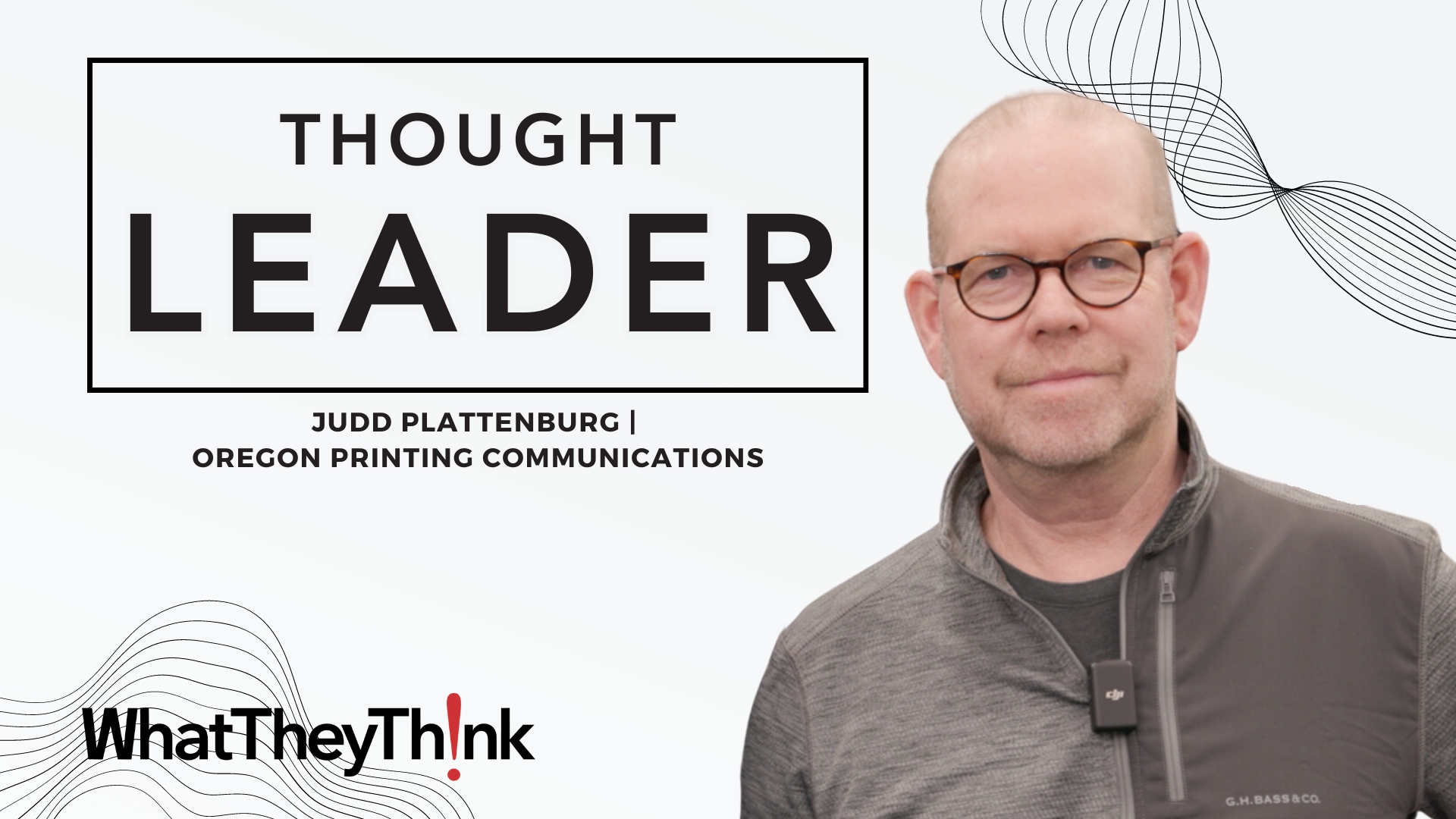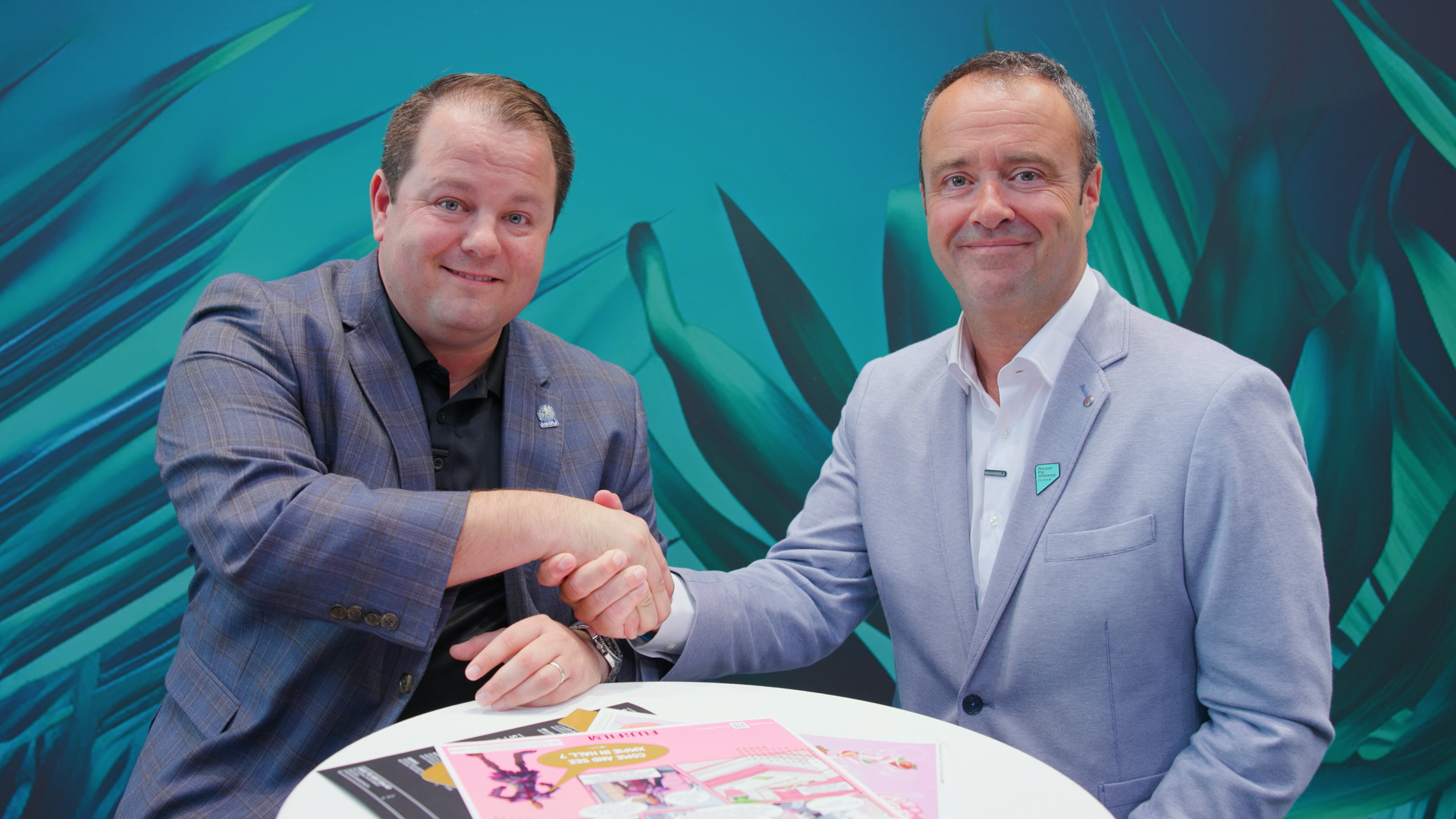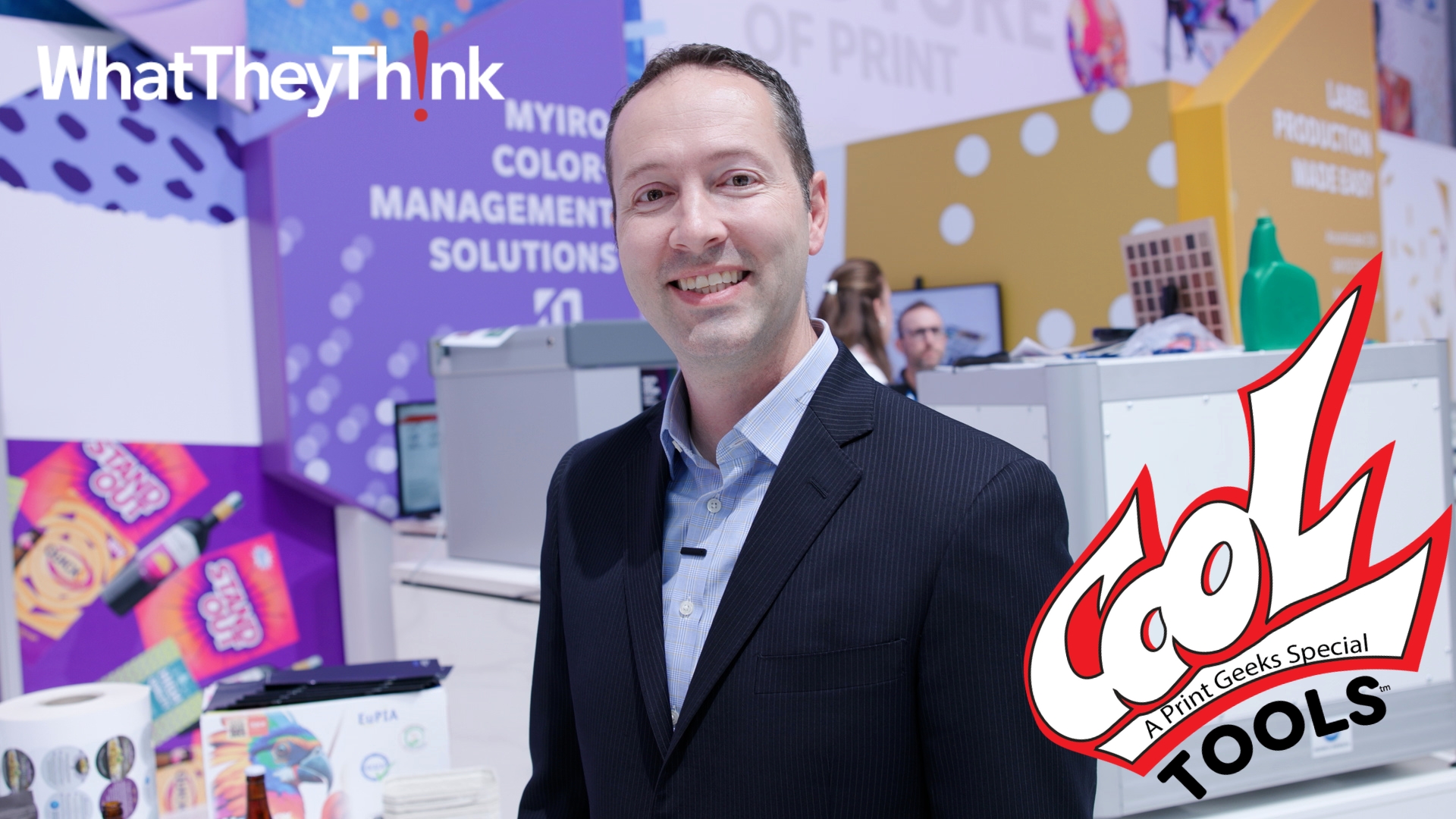This is the first in a series of articles about the state of printing industry trade associations. Disclosure: the writer is a former employee of the National Association for Printing Leadership (NAPL) and a current member of Printing Industries of America (PIA).
They mirror the industry they serve, and what the printing industry’s two principal trade associations have been seeing in the reflection lately is a picture they may sometimes have trouble recognizing.
Both are like the printing industry in being smaller, less resource-rich, and more beset by competition than they were when times were prosperous.
Like many printing companies, both have had to make tough and in some cases painful structural changes. Just as printers have been forced to rethink their roles as providers of media services, so have these groups had to recalibrate assumptions about the value and even the relevance of what they traditionally offered printers as benefits of membership.
Nothing has been easy for Printing Industries of America (PIA) or the National Association for Printing Leadership (NAPL), and their road ahead may be harder still. But, their chief executives say that the groups have adapted to circumstances, learned from mistakes, and committed themselves to strategies for stability as they continue to go where their industry takes them.
“Being an extension of our members’ business” is what drives PIA and shapes its decisions about the member services it provides, says Michael Makin, the group’s president and CEO. Given what printers are up against on economic, legislative, and other fronts, he says, the importance of belonging to PIA through its network of regional affiliates “is more so today than ever.”
By joining a trade association, says Joseph P. Truncale, president and CEO of NAPL, “you don’t have to make it up from scratch” when confronted by problems that the association exists to help you solve. He acknowledges, however, that printers don’t affiliate with trade groups as readily as they used to.
“It’s no longer a perfunctory exercise,” Truncale says. “Those days are gone.”
That reality is plain to see in recent developments at both associations.
In announcing an organizational restructuring last November, Makin said that PIA was taking “strong and deliberate steps to respond to current industry conditions while staying true to our core mission statement.” He said the steps would include the retirement of a long-operating training facility at the association’s Sewickley, PA, headquarters and layoffs of association staff.
To be emptied of equipment and sold is a 53,000-sq.-ft. training center that PIA acquired when it consolidated with the Graphic Arts Technical Foundation (GATF) in 1999. GATF, well remembered by many in the industry, was a research and education center that traced its origins to 1924.
Keeping up the building and its equipment was “unsustainable from a financial perspective” and not in line with PIA’s evolving training model, said Makin in the restructuring announcement.
The printing machinery, once used for hands-on training and materials testing, will be returned to the vendors that donated it. The building will be listed for sale, and once it is sold, Makin says, PIA will decide where to maintain the remaining headquarters operation. (PIA, which has an office for legislative advocacy in Washington, D.C., relocated from Alexandria, VA, to Sewickley following its absorption of GATF.)
Makin says that vacating the former GATF property doesn’t mean that PIA is vacating its role as a provider of technical training and R&D.
Equipment was only one part of fulfilling that mission, and without it, he says, the association can focus on delivering technical content through channels such as the online training platform PIA plans to introduce this year. The association also hosts conferences, produces technical publications, and can use, Makin says, the tech centers of its equipment vendor partners if it needs to.
Headcount reductions have trimmed 14 jobs from the headquarters roster, leaving PIA with a professional staff of 33. This staff team sees to the needs of about 7,000 printing companies that belong to PIA through dues check-offs from their memberships in any of 22 PIA regional affiliates in the U.S. The association also has international affiliates in Canada, South Africa, and Australia.
Industry consolidation has taken a toll both of membership and of regional affiliations. PIA once comprised thousands more printing companies than it does today, and there used to be as many as 50 regional groups. Makin says that despite the contraction, PIA continues to represent 20% to 25% of the printing industry—consistent, he says, with the penetration of other national trade associations in their respective business sectors.
At NAPL, a roster of 1,800 participating companies also speaks to an ongoing shrinkage of the membership base. “When one member buys another member, we lose a member,” says Truncale, who directs a staff of 22 from an office in East Rutherford, NJ.
NAPL differs from PIA in having a strictly national footprint—there are no regional affiliates. Unlike PIA, it has no lobbying arm or R&D activity. The association is defined “as much by what we don’t do as by what we do,” Truncale says.
Since becoming its chief executive in 2003, Truncale has focused on turning NAPL into a consultancy for dispensing a variety of business advisory services. Currently, about half of the association’s staff are dedicated to consulting in areas that include sales and marketing, mergers and acquisitions, executive recruitment, and strategic planning.
Truncale wants to position these services as ROI-producing benefits that add value to membership in NAPL. But, he notes that earning and keeping printers’ investments in membership can be tricky targets for an association to hit.
A few years ago, he says, some of NAPL’s larger members began to complain that the association’s revenue-based dues assessment formula “taxed” them unfairly, given that everyone received the same services regardless of size. NAPL responded by switching to a flat annual fee of $1,200 for all members.
NAPL and PIA share certain features—both, for example, have economic research divisions and peer-group programs. Talk about merging the two associations is perennial in the industry, and in 2012, it reached new heights as a task force representing the groups tried and failed to engineer a consolidation.
As far as PIA is concerned, says Makin, “there’s nothing we’d love to have seen more” than a successful combination with NAPL. He says that NAPL rejected a proposal that would have blended the two organizational models and brought the groups together.
If NAPL was unable to consummate a deal with PIA, it had better luck in its discussions last year with the Association of Marketing Service Providers (AMSP, formerly the Mailing & Fulfillment Service Association, a 93-year-old organization with 12 regional chapters).
The inconclusive negotiations with PIA gave NAPL “a better sense of how these things are done,” according to Truncale. In December, the NAPL and AMSP memberships voted to merge the groups according to an integration plan that will unfold over the next three years.
“I don’t think that will be the last merger that happens between and among industry associations,” says Truncale, who also brought the National Association of Quick Printers (NAQP) into the NAPL fold in 2006. “I wouldn’t rule anything or any group out of that equation,” he said.
Together or apart, PIA and NAPL face the same long-term questions about where they fit into a business environment that isn’t nearly as conducive to participation in trade associations as it once was.
Associations once were the exclusive sources of industry-specific technical, economic, and management information for printers. Today, the same information also is available from other sources via the Internet—a fact that the leaders of PIA and NAPL acknowledge.
A printer who needs an answer may opt for a “quick Google search” instead of a telephone call to a trade group, Makin says. Truncale, likewise, notes that “Information Central,” a hotline service that NAPL used to operate, “is now called Google.”
The groups can and do retain their advisory roles by making their own uses of the Internet. But, other trends are harder to counteract.
Reduced participation in trade associations isn’t unique to the printing industry, according to Truncale. Everywhere, he says, trade group executives are finding their members unable to tear themselves away from pressing business matters to take part in association activities. “Time is the new currency,” he says.
There’s also competition in the fact that the industry’s younger members tend to form their own networks via social media, lessening their interest in traditional mingling.
What joiners seek above all, says Truncale, are niche-focused groups that help their members address everyday, practical concerns. He endorses the advice to be found in Race for Relevance, a handbook that urges association executives to bring about radical change in the thinking, structure, and aims of their organizations.
But none of this diminishes the role of or the need for national trade associations, the two leaders agree.
According to Makin, there’s still no substitute for the help a trade association can provide “when all hell breaks loose and the OSHA inspector is at the door.” Should a member “call in a panic” about an environmental audit, a human resources controversy, or some other crisis, he or she will find PIA a source of immediate assistance available nowhere else, Makin says.
Trade associations offer money-saving opportunities that individual companies would find difficult if not impossible to achieve on their own, says Truncale. NAPL, for example, employs a full-time specialist in aggregating energy packages—a service that has helped NAPL members trim thousands of dollars from their utility bills.
Something else that requires expert representation is pressing for legislative and regulatory changes that benefit the printing industry as a whole—a core activity that PIA pursues through its government affairs office in Washington.
In December, Makin went to Capitol Hill to testify before the Senate Judiciary Committee about abusive patent litigation, a.k.a. patent trolling, that victimizes printers. PIA also targets tax reform, the state of the U.S. Postal Service, and health care costs as key issues for printers.
Confronting a future filled with such concerns, the heads of the two groups speak realistically about what it will take to retain their members’ support.
There is no longer any “magic” in joining a trade association simply for the sake of belonging to one, says Truncale. That means it's up to NAPL to create and share a “knowledge capital framework” that members can turn into actionable plans for business improvement.
What printers expect today in return for their association dues payments, says Makin, is what they have always expected: ROI paid in the form of marketing intelligence, reliable technical information, steadfast government advocacy, and the other services that PIA continues to provide.
Only a progressive, hard-working, members-first organization that spurns the old “gentlemen’s club” stereotype of trade associations can deliver these services credibly and effectively, notes Makin.
“It’s not your daddy’s PIA,” he says.
Next week: how three regional affiliates of PIA are tackling trade association challenges at the grass roots.















Discussion
By Howie Fenton on Jan 21, 2014
Patrick,
As a former staff member of GATF and current staff member of an NAPL I'd like to thank you for a balanced article. And, you might also consider including in your article the merger of two inplant associations: NGPA (National Government Publishing Association) and the IPMA (In-plant Printing and Mailing Association).
Howie
By Les Csonge on Jan 21, 2014
Very insightful into the history and current status of the Associations, maybe they should become PAMIA Print AND MEDIA and NAPML ;-)
As the media of paper reduces and that of online increases might be a smart move to extend the range of members accordingly.
By Joseph Truncale on Jan 22, 2014
Patrick, congratulations on your excellent article on the current state of industry associations.
One correction to note relative to the NAPL and Printing Industry of America discussion. It was stated that NAPL "rejected a proposal to blend the two organizations". In fact, NAPL leadership proposed an innovative approach which would have combined the two national associations while providing full autonomy to the local affiliate organizations. This was rejected.
Nevertheless, we have continued to seek willing, innovative partners who share our excitement and optimism for our emerging industry and our willingness to try new approaches and structures. The Association of Marketing Service Providers is one such organization. I am confident there will be more.
Joseph P. Truncale, Ph.D.
President & CEO
NAPL
By Charlene Sims on Jan 26, 2014
Patrick, your article was very interesting and good insight into the association world. Very balanced. Thank you. It is hard to reckon how I would have ever been able to have a successful business without the associations to back me up. I truly hope they both are able to grow and new young people coming into this world will at some point recognize the value that just the internet and Google will not give them. There is no greater learning experience than sitting down with a group of your peers and discussing issues hitting us every day at conferences that the associations provide for us.
Discussion
Join the discussion Sign In or Become a Member, doing so is simple and free